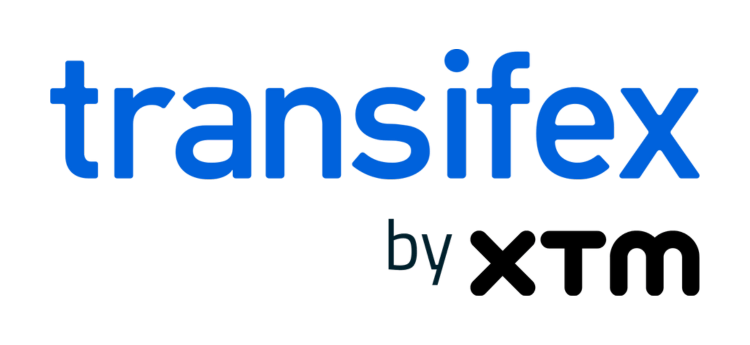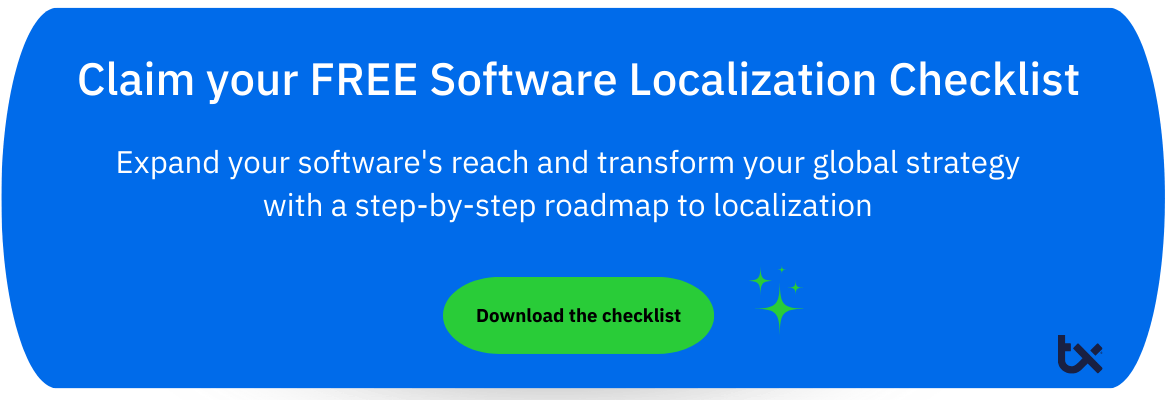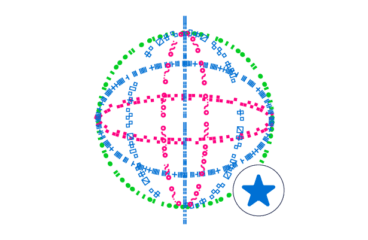Software as a Service (SaaS) is a transformative model of software delivery where applications are hosted on the cloud and accessed via the internet.
This paradigm eliminates the need for users to install and maintain software on individual devices, making it both cost-effective and scalable. Statistics suggest that over 85% of apps used in 2025 will be SaaS-based.
SaaS has become a cornerstone for businesses worldwide, and in this article we will explain SaaS product development, its significance, and role in continuous localization and global expansion.
What is a SaaS Product?
A SaaS product is a software solution delivered over the internet, typically on a subscription basis. Unlike traditional software, SaaS operates on a centralized server, with users accessing its features via web browsers.
Examples include project management tools like Asana, communication platforms like Slack, and customer relationship management (CRM) systems like HubSpot.
Here are some major characteristics that make up a SaaS product:
- Cloud-Based Infrastructure: SaaS products are hosted in the cloud, ensuring accessibility from anywhere with an internet connection.
- Subscription Pricing Models: They often follow a tiered pricing strategy, allowing users to pay for what they need.
- Automatic Updates: SaaS products receive seamless updates, ensuring users always have access to the latest features and security enhancements.
- Scalability: SaaS platforms are designed to handle varying user loads, making them suitable for businesses of all sizes.
- Multi-Tenancy: A single SaaS instance serves multiple users while keeping their data isolated and secure.
“Most of all, I discovered that in order to succeed with a product, you must truly get to know your customers and build something for them.”
– Marc Benioff, co-founder of Salesforce
Importance of SaaS in Modern Business
The adoption of SaaS solutions has reshaped the operational dynamics of organizations. Here are five key reasons why SaaS is indispensable for modern businesses:
Cost Efficiency
SaaS eliminates the need for upfront hardware investments and ongoing maintenance costs. Businesses can access high-quality software through a subscription, reducing capital expenditure and shifting to a more predictable operational expense model.
Accessibility and Collaboration
SaaS products revolutionize how teams work by fostering accessibility and collaboration on a global scale.
Since SaaS solutions are hosted on the cloud, users can access them from anywhere, as long as they have an internet connection. This feature is particularly valuable for remote teams and organizations with geographically dispersed operations.
SaaS platforms integrate collaborative tools that enable real-time communication and workflow synchronization. For instance, Transifex Native offers seamless integration with development workflows, ensuring that localized content updates are deployed continuously without manual intervention.
Scalability
SaaS solutions can easily scale up or down based on business needs. This flexibility is especially vital for startups and SMEs, allowing them to access enterprise-grade software without substantial investment.
More Security
Leading SaaS providers prioritize data security, offering advanced encryption, regular security updates, and compliance with global standards. This ensures businesses can trust SaaS platforms with sensitive information.
Accelerated Innovation
SaaS platforms empower businesses to focus on innovation by offloading infrastructure management and maintenance to specialized providers.
A critical aspect of innovation in SaaS lies in continuous localization, a process that ensures the software remains relevant across global markets. Continuous localization integrates real-time translation and adaptation into the development cycle, eliminating delays between content updates and deployment.
Transifex AI uses machine learning to optimize translation quality and reduce the reliance on manual efforts. This enables businesses to address the evolving needs of international audiences quickly and efficiently.
Steps Involved in SaaS Product Development
Developing a SaaS product requires meticulous planning, execution, and iteration. Here are the key steps involved:
Identify the Market Needs
The first step in SaaS product development is understanding the target audience and their pain points. Conduct market research to identify gaps and trends, and outline specific problems your SaaS solution will address. Define the product’s core goals, features, and value proposition.
This stage sets the foundation for a user-centric SaaS product and ensures alignment with business objectives.
Work on the Product Architecture
A well-thought-out product architecture is crucial for scalability, security, and performance.
Design the SaaS product with multi-tenancy and modularity in mind, ensuring it can accommodate multiple users and future enhancements. Choose the right tech stack and frameworks that align with your requirements.
This stage also involves planning database structures, API integrations, and system workflows to ensure a seamless user experience.
Build and Iterate the MVP
Develop a Minimum Viable Product (MVP) to test the core functionalities and validate the product concept.
Focus on essential features that address the primary user needs. Using tools like Transifex Native during this stage can streamline continuous localization and enable your MVP to be market-ready in multiple languages from the start.
Iterative development is key; gather user feedback and refine the product in successive cycles.
Implement Continuous Localization
Continuous localization is a game-changer in SaaS product development, especially for global markets. This approach integrates localization into the development cycle, ensuring that updates are translated and deployed automatically. To achieve this seamlessly, modern solutions like Transifex Native offer a fileless approach, integrating directly with development workflows and allowing for real–time translation updates without needing to redeploy applications. In combination with Transifex AI, you can simplify software localization by automating translations and eliminating manual interventions where possible.
A great example of Transifex’s impact is HubSpot’s success story. By leveraging Transifex, HubSpot automated its localization process, achieving faster turnaround times for translating and deploying content across multiple languages. This not only improved their global customer experience but also boosted operational efficiency.
Continuous localization ensures that your SaaS product is accessible and culturally relevant to diverse target audiences.
Test and Deploy
Rigorous testing ensures the product’s reliability, performance, and security. Conduct usability, functionality, and stress testing to identify and address potential issues.
Once the product meets quality standards, deploy it to the cloud using a reliable hosting platform. Continuous integration and delivery (CI/CD) pipelines are essential for maintaining seamless updates and improvements post-launch.
Post-Launch Maintenance and Scaling
Scaling the product involves upgrading infrastructure, expanding capabilities, and ensuring consistent localization updates. After launch, prioritize regular maintenance to address bugs and optimize performance. Analyze user behavior to identify opportunities for feature enhancements.
Challenges in SaaS Product Development
Developing a SaaS product is a complex process that presents numerous challenges. Each stage of development requires careful attention to technical, operational, and user-centric aspects. Below are some common challenges and strategies to address them:
Ensuring Scalability
Failure to account for scalability can lead to service outages and dissatisfied customers.
SaaS products must handle increasing numbers of users and data as they grow. Designing a scalable architecture from the start is essential to avoid performance bottlenecks. Multi-tenancy, cloud-based infrastructure, and elastic computing resources can help meet growing demands.
Managing Security and Data Privacy
Overlooking security measures can lead to data breaches, legal penalties, and reputational damage.
SaaS solutions deal with sensitive customer data, making security and compliance critical. Implementing encryption, multi-factor authentication, and regular security audits are necessary steps. Adhering to regulations like GDPR and HIPAA is also crucial to maintaining user trust.
Navigating Continuous Localization
Without proper software localization, businesses risk alienating users in non-native markets. Localization involves adapting a SaaS product for global audiences, which can be challenging without the right tools.
Continuous localization ensures that updates are seamlessly translated and deployed in real-time.
While localization is vital for global adoption, implementing internationalization (i18n) can be challenging. It is critical to ensure your product architecture supports multi-language adaptability from the start. With the right software localization tool, this becomes easier by integrating continuous localization together with i18n, minimizing errors, and streamlining the entire workflow.
Retaining User Engagement
SaaS products rely on customer retention for sustained revenue. Creating a seamless user experience, offering ongoing support, and regularly updating features are essential. Tracking user feedback and usage data can guide improvements, but ignoring these insights can lead to churn. A lack of user engagement can significantly hinder product adoption and growth.
Addressing Operational Costs
Poor cost management may lead to budget overruns and stalled projects. Developing and maintaining a SaaS product requires significant investment in infrastructure, talent, and marketing.
Controlling costs while ensuring quality can be difficult, especially for startups. Adopting efficient workflows, leveraging cloud-based resources, and using automation tools like Transifex AI can reduce operational expenses.
Building a Global SaaS Product
As we’ve explored, developing a successful SaaS product is a complex journey that requires strategic planning, innovative approaches, and a global mindset.
The key to thriving in this competitive ecosystem lies in understanding and addressing the critical challenges of scalability, security, user engagement, and, most importantly, global accessibility. By seamlessly integrating continuous localization into the SaaS product development lifecycle, Transifex enables you to transform your digital product into a global experience with ease.
Whether you’re a startup or an enterprise, leveraging advanced AI-powered features and custom workflows not only simplifies localization but also accelerates your time to market, helping you reach and engage global audiences effectively.
Ready to scale your software with AI-powered localization? Request a free demo today!
Frequently Asked Questions
What is the role of continuous localization in SaaS product development?
Continuous localization ensures that a SaaS product remains linguistically and culturally relevant across global markets. Tools like Transifex Native allow real-time translation updates within the development workflow, significantly reducing time-to-market and improving user experience worldwide.
How to deploy a SaaS product?
Here’s how you can deploy a SaaS product in easy steps:
- Set up a reliable cloud hosting environment, such as AWS or Azure.
- Establish a CI/CD (Continuous Integration/Continuous Deployment) pipeline for seamless updates.
- Migrate the application and database to the production server.
- Perform comprehensive testing in the live environment.
- Use DNS configuration to map the domain to the cloud server.
- Monitor performance and ensure scalability post-deployment.
How do you generate leads for a Saas product?
Generating leads for a SaaS product involves a mix of inbound and outbound strategies:
- Content Marketing: Create valuable blogs, whitepapers, and webinars to attract potential customers.
- SEO and PPC Campaigns: Optimize your website and run targeted ads to drive traffic.
- Social Media Marketing: Use platforms like LinkedIn and Twitter to engage with your audience.
- Free Trials and Freemiums: Offer users a chance to experience your product risk-free.
- Partnerships and Referrals: Collaborate with complementary businesses or incentivize existing users to refer others.










